


Gazet International Annual Business Awards 2025
• Venue: ITC Ratnadipa, Colombo, Sri Lanka
• October 25, 2025





Gazet International Annual Business Awards 2025
• Venue: ITC Ratnadipa, Colombo, Sri Lanka
• October 25, 2025

The global stage is set. Gazet International, the trusted voice of international business and innovation,proudly announces the 5th edition of the much-anticipated Gazet International Business Excellence Annual Awards 2025, to be hosted at the Prestigious ITC Ratnadipa, Colombo, Sri Lanka, on October 25, 2025. This signature international event honors exceptional companies and individuals from across industries who have shown remarkable commitment to innovation, sustainability, leadership, and overall business excellence.
The Gazet International Business Excellence Annual Awards are more than just another business awards program. This serve as a global platform to acknowledge companies-regardless of size, geography, or revenue-that have demonstrated exceptional innovation, visionary strategies, sustainable business practices, and a lasting positive impact on their sectors.
Awardees will gain International media exposure, networking opportunities, a platform to enhance brand credibility.
What sets the Gazet International Business Excellence Annual Awards apart is our transparent and inclusive process.
Entries are open to companies across all regions and industries.
Nominate now: https://gazetinternational.com/giawards2025/
Submissions are evaluated by an experienced panel based on:
• Strategy and innovation
• Sectoral impact
• Sustainability and governance
• Overall business excellence
Sponsorship Opportunities Now Open

• We are welcoming sponsors to come forward and be part of this grand celebration of excellence.
• Align your brand with a globally recognized event and gain access to high-value visibility, branding, and premium networking with industry frontrunners.
For sponsorship details, reach out to: info@gazetinternational.com
Event Passes - Join the Ceremony in Colombo
Attending the GI Annual Awards 2025 is your chance to witness inspiring success stories globally.
Delegates,nominees, and business leaders can now book your passes online.
Being part of the GI Annual Awards is not just about winning. Its about storytelling, visibility, networking, and learning from global achievers.
About Gazet International
Gazet International is a global media platform covering business, technology, finance, banking, and corporate
Gazet International Annual Awards 2025
Our annual awards reflect our commitment to honoring leadership, innovation, and impact across sectors. Join the Global EventVenue: ITC Ratnadipa, Colombo, Sri Lanka
Date: October 25, 2025
Details: https://gazetinternational.com/giawards2025/
Contact: info@gazetinternational.com

Editor’s Note
As we close the second quarter of 2025, this edition of our magazine brings together a compelling mix of insights from across the business world from leadership and finance to technology, travel, and consumer behavior.
This quarter features a series of articles written by our contributing writer, Titli Ghosh, covering themes that are timely and thought-provoking including the rise of Gen Z as value-driven consumers, the growing influence of women in leadership, the future of AI and smartphones, and the evolving landscape of green finance in Asia.
I’ve also contributed to this issue with an article discussing The Global Rise of Bancassurance which explores how the synergy between banking and insurance is reshaping financial services worldwide.
We’re equally excited to feature an announcement for our upcoming Gazet International Annual Business Excellence Awards, scheduled for October 25 at ITC Ratnadipa, Sri Lanka. Nominations and sponsorship opportunities are now open, and we look forward to celebrating excellence and innovation on a global stage.
We hope this issue leaves you inspired and informed as we move into the second half of the year.
Warm regards,
Shree R Editor-in-Chief








“She Achiever” Tales: 10 Asian Women Business Leaders Who Inspire
It’s 2025, and the question of gender diversity in leadership positions cannot be ignored anymore. Interestingly, a McKinsey study stated that organizations that have better gender diversity are 25% more likely to outperform their financial goals. However, only 11% of companies on the Fortune 500 list are run by women. Additionally, a 2024 report stated that women hold just 28% of senior management roles globally. Nonetheless, the brighter side of these figures is that the number of female leaders is still rising markedly every year. Here’s a look at a few such inspirational women leaders who have been ruling the Asian business space for a while.
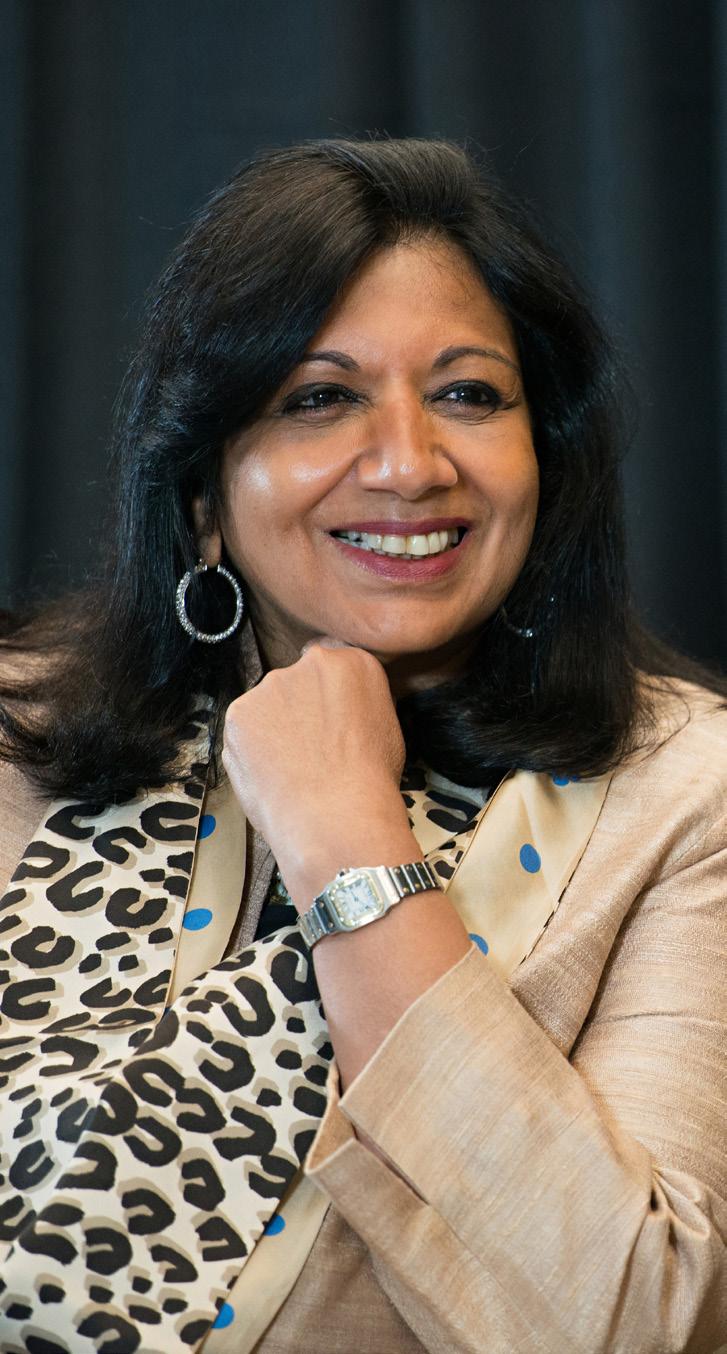
Executive Chairperson, Biocon, India
Kiran Mazumdar-Shaw calls herself an accidental entrepreneur. A self-made, first-generation business tycoon, Kiran wanted to become a brewer, following in the footsteps of her father, who worked as the head brewmaster at United Breweries. However, back in the 1970s, nobody wanted to hire a woman for that role.
She then chanced upon an Irish entrepreneur who owned Biocon and partnered with him to expand the business in India, manufacturing industrial enzymes. Since then, Biocon has evolved into a global biopharmaceutical organization, while Kiran has made it to TIME magazine’s list of the 100 most influential people in the world and the Forbes list of the World’s 100 Most Powerful Women.

Initially an auditor at PwC, Sandy Ran Xu joined China-based e-commerce giant JD.com in 2018. Sandy worked as the CFO for JD.com for three years, before stepping into her role as its CEO in May 2023, becoming the first woman to be promoted to the position.
The organization has been achieving new goals every year under Sandy’s leadership. In 2024, JD.com raked in a massive revenue amounting to $159 billion. Likewise, in the first quarter of 2025, the company registered a revenue figure of 301.1 billion Chinese Yuan (roughly $41.5 billion). Apart from leading JD.com, Sandy also serves as an Independent Director at Baidu.
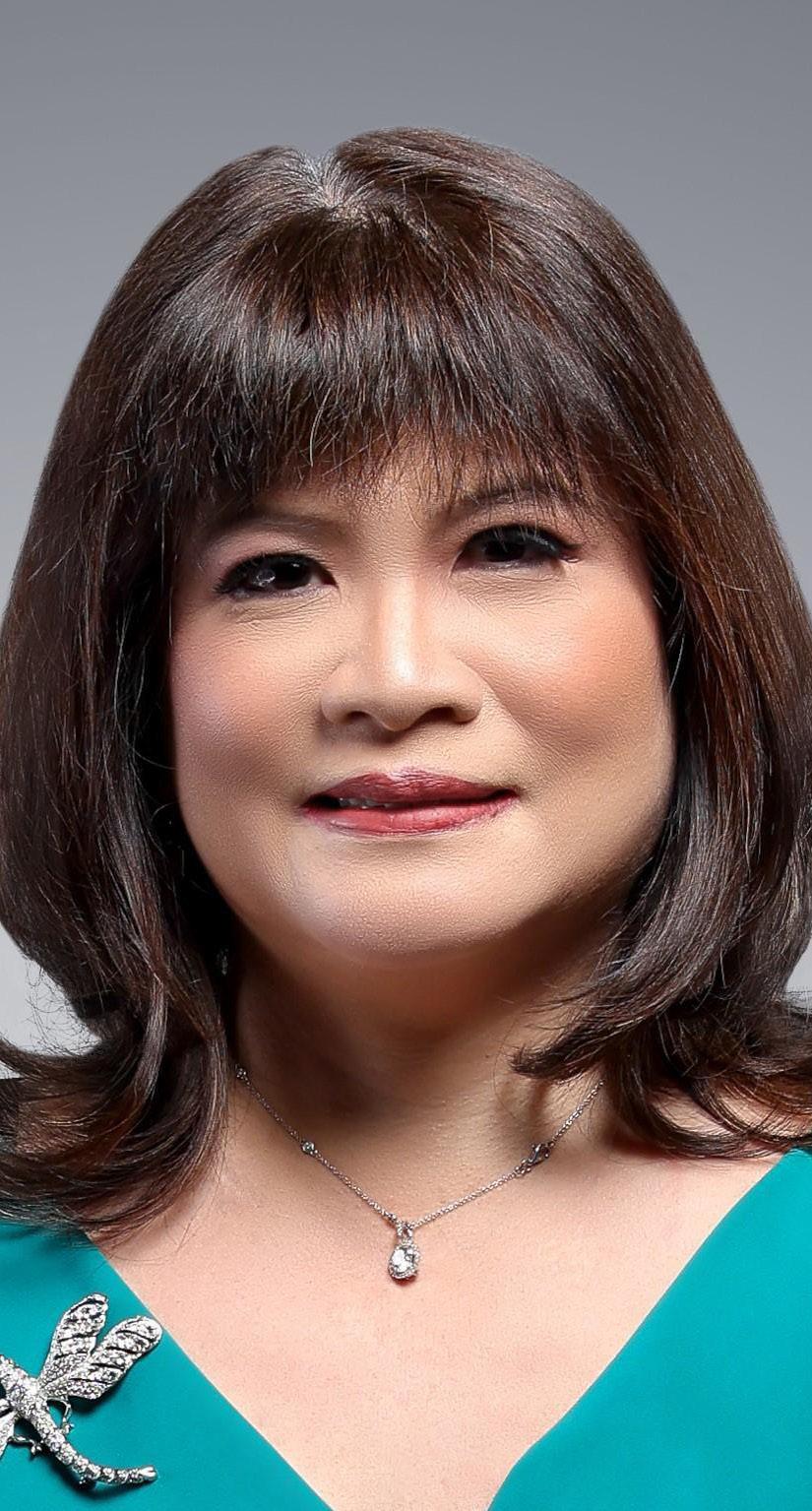
The CEO of the Sintesa Group, Shinta Kamdani, is a prominent name in the Asian business scene. While the Sintesa Group started as a family business in 1919, it was Shinta’s zeal that helped her rebrand the business in 1999. From being a rubber plantation to emerging as a group of 17 companies with stakes in industrial products, consumer goods, property, green energy, and more, the Sintesa Group has evolved by leaps and bounds under Shinta’s leadership.
Shinta has also founded the Indonesia Business Coalition for Women Empowerment (IBCWE) and the Indonesia Business Council for Sustainable Development (IBCSD) and heads several other social and business groups and organizations.
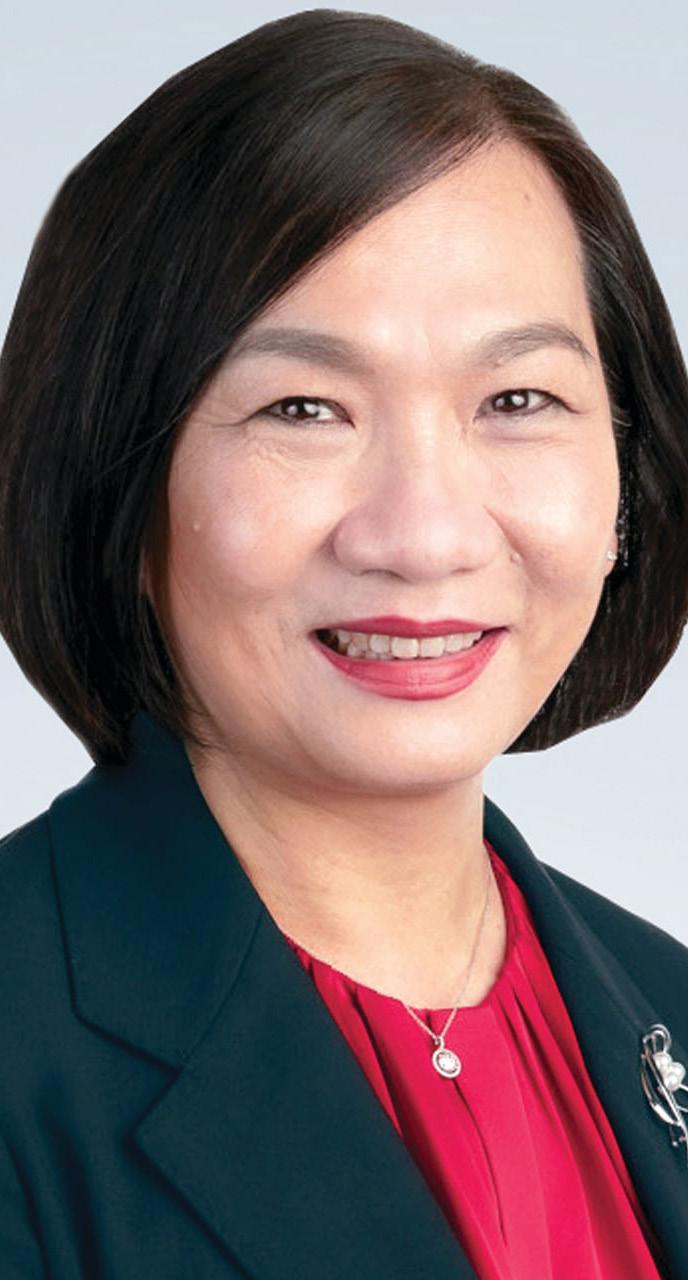
The Group CEO of Singapore-based Oversea-Chinese Banking Corp. (OCBC), also known as one of the “Big Three” in the Singapore banking space, Helen Wong has been in the banking industry for more than four decades. She has also spent over two decades at HSBC, where she led the Greater China banking operations.
The first woman to lead a Singaporean bank, Helen has shown exemplary leadership. She led OCBC to a net income of $5.9 billion in 2024. In May 2025, Helen bagged the title of Outstanding Chief Executive of the Year at the 40th Singapore Business Awards.

The year 2025 seems to be treating Joey Wat well, as she has been named to Fortune’s annual list of the Most Powerful Women and has been featured on the list of CNBC Changemakers. The CEO of Yum China, one of China’s biggest restaurant brands, Joey inspires people with her ragsto-riches tale.
She apparently grew up working in factories as a girl in a small Chinese village. Her grit later took her to the Kellogg School of Management. After successful stints at McKinsey and AS Watson, she led KFC China and eventually took over as the CEO of Yum China in 2018.
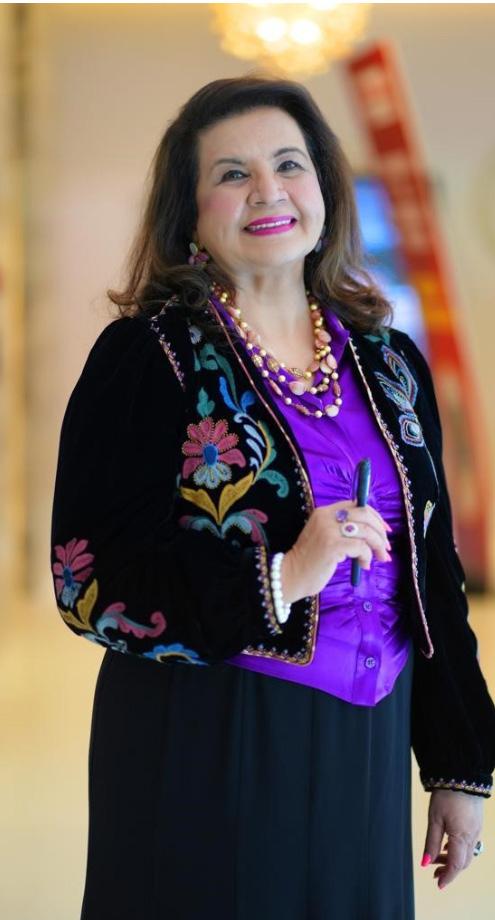
Named one of the Global 200 Women Power Leaders of 2024, Dr. Mariam Sheikh has been associated with the education industry for over three decades. From owning a preschool to leading international universities, Dr. Mariam has done it all. After retiring as VP, Amity University, Dubai, Indian-born Dr. Mariam had decided to manage her art gallery in Mumbai. However, the COVID-19 pandemic made her realize she wanted to continue exploring the domain of education.
In 2020, she founded MS Education Consultants to help UAE-based students achieve their academic goals. The appointment of her organization as the official “Middle East Strategist” for the University of Guelph of Canada in 2021 was one of the pivotal moments of her journey.
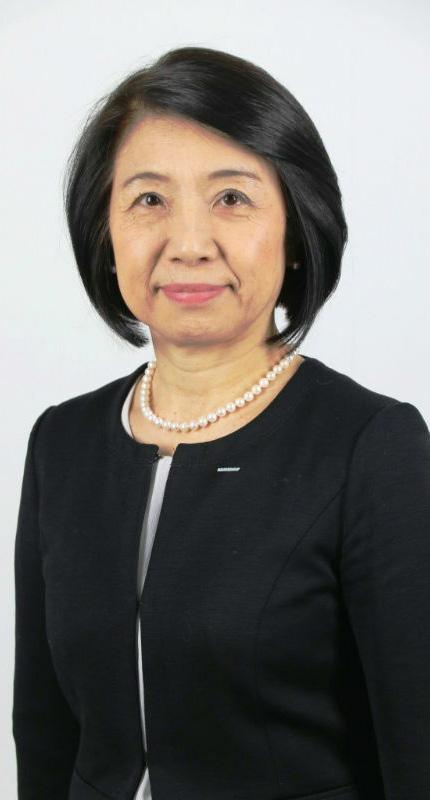
President and CEO, Suntory Beverage & Food, Japan
In 2023, Makiko Ono became one of Japan’s rare female CEOs when she took up the leadership of Suntory Beverage & Food, the Suntory Group’s soft beverage brand. Makiko had joined Suntory back in 1982 and has, over the years, grown with the company. In the 1990s, Makiko worked for Suntory France in Paris and became the organization’s first woman expat.
Suntory, which used to be a family business, has grown to be a multinational name under Makiko’s leadership. Makiko once said in an interview that she hopes 30% of all managers at Suntory would be female by 2030.
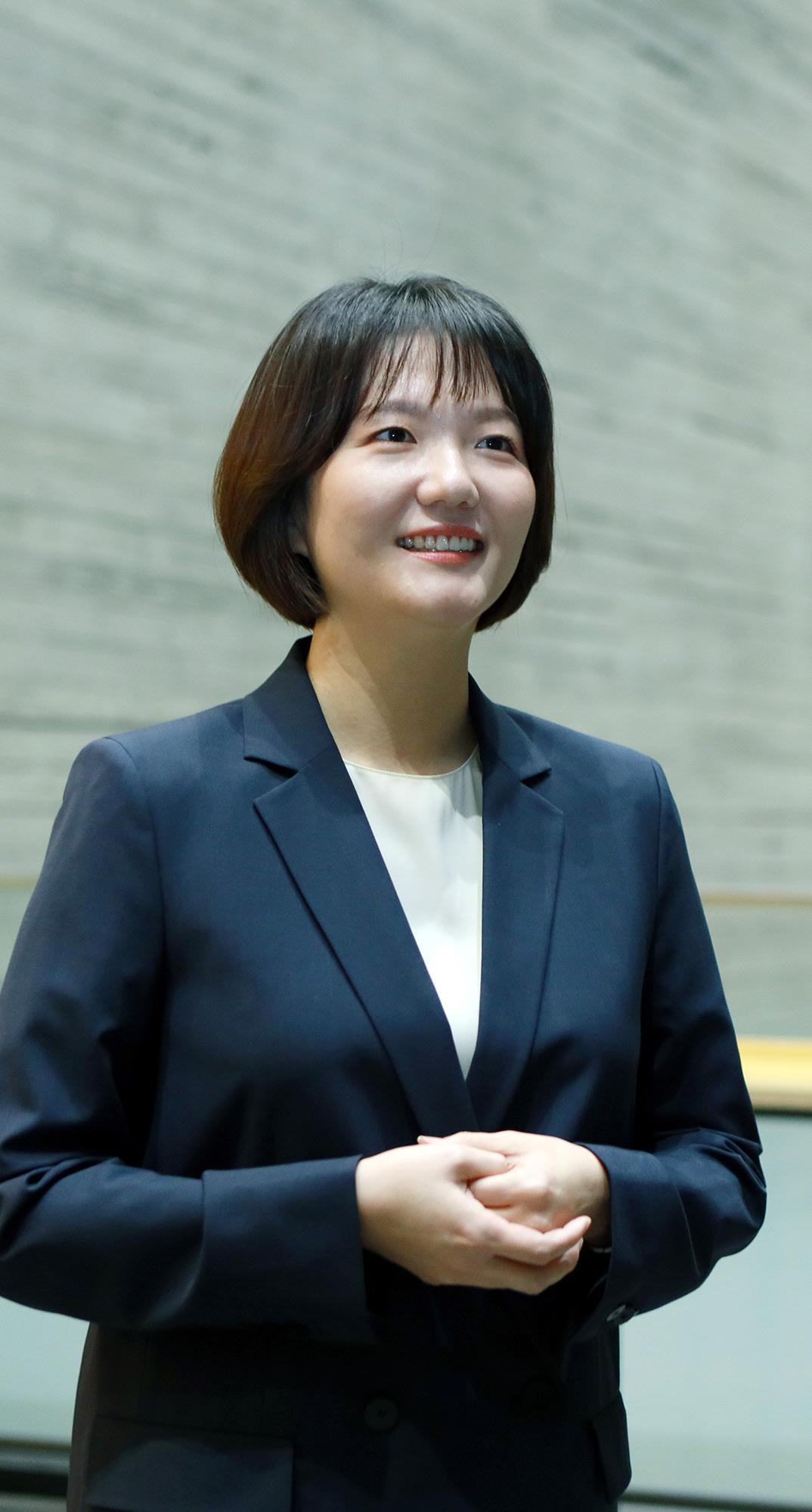
Choi Soo-yeon first joined South Korea’s biggest search engine, Naver (or the “Korean Google”), back in 2005. After working in marketing and PR for a while, she turned her attention to her law career.
Following a stint at Harvard Law School, she went back to Naver in late 2019. A few years later, 40-year-old Choi became the first female CEO of the Asian internet giant and its youngest leader too. Under Choi’s leadership, the organization has taken marked steps toward expansion into Southeast Asia, North America, and Europe.
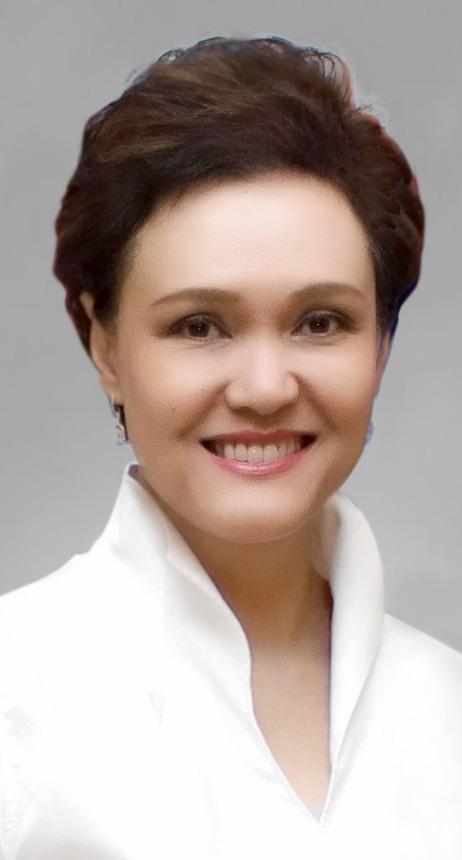
Group CEO, Dusit International, Thailand
Before taking over as the Group CEO of Thailand’s leading hospitality brand Dusit International, Suphajee Suthumpun had successful stints at IBM and Thaicom and also became the youngest and the first female MD at the former.
Under her leadership, Dusit International expanded to five business units, including the food and property development divisions. Suphajee also serves on several advisory boards such as those of Thammasat University and the Sasin School of Management.

Co-Founder and Former COO, Grab, Malaysia
Though Tan Hooi Ling stepped down from her role as COO of Grab back in 2023, her contribution to the Asian business milieu cannot be ignored. After successful stints at Eli Lilly and McKinsey, Tan joined Harvard Business School to attend a sponsored MBA course. There, she met Anthony Tan, and one of their business plans led to Grab.
Founded in 2012, Grab (initially known as MyTeksi) eventually became the first unicorn and super app of Southeast Asia. What started as a mobile app for taxis in Malaysia later became a go-to app for food delivery and digital payments too.
The list is definitely not exhaustive but tries to showcase women leaders from all prominent Asian countries. What’s exciting is that more and more women are breaking gender stereotypes and coming ahead to lead organizations in male-dominated industries. We’re hoping for a better tomorrow, where women won’t have to struggle for equity and where the glass ceiling won’t determine a woman’s career trajectory.

Born between 1997 and 2012, Generation Z, or Gen Z, is perhaps the first generation that has no clue that a world without the internet, social media, and smartphones ever existed. A generation sandwiched between Millennials (those born between 1981 and 1996) and Gen Alpha (those born between 2011 and 2024), Gen Z thrives on technology but also makes conscious and smart purchasing decisions.
Known to resort to “revenge quitting” when their ethical work demands are not met, Gen Z is not a generation to be messed with. And with many belonging to this generation now growing up to make serious life decisions, Gen Z forms a core component of the consumer base for many brands. So, how exactly is Gen Z redefining consumer behavior in 2025? Let’s find out.
A 2022 Salesforce study on the differences between Generation Z and Millennials, when it comes to buying behavior, proved that Gen Z spent less than Millennials while shopping. Additionally, 64% of the respondents from Gen Z said they preferred social shopping, meaning they used social media platforms to browse and buy products/services, while 41% said they shopped through social media influencers.
On the other hand, only 58% Millennials preferred social shopping and a mere 32% engaged in purchasing through influencers. So, Gen Z consumers aren’t just making smart buying decisions, they are also more tech-savvy than previous generations. There’s no denying the fact that Gen Z is revolutionizing consumer behavior in multiple ways, and here are some major trends that this generation is bringing in:
A 2024 Nielsen study proved that Gen Z is price sensitive and compares products and prices using technology before making any buying decision. Likewise, a 2025 JPL article on healthcare pricing states how Gen Z consumers choose healthcare providers that offer financial clarity. However, this doesn’t mean they aren’t ready to pay more for premium products that maintain quality standards.
In the past, flashy ad copies and catchy jingles made sure people recalled your brand when they went out to shop and remained loyal to it if it resonated with them. With the evolution of marketing through the years, brand loyalty is a tough nut to crack. What’s worse? A 2024 McKinsey study stated that only 30% of Gen Z respondents in the US and UK said they would look for their old brand when
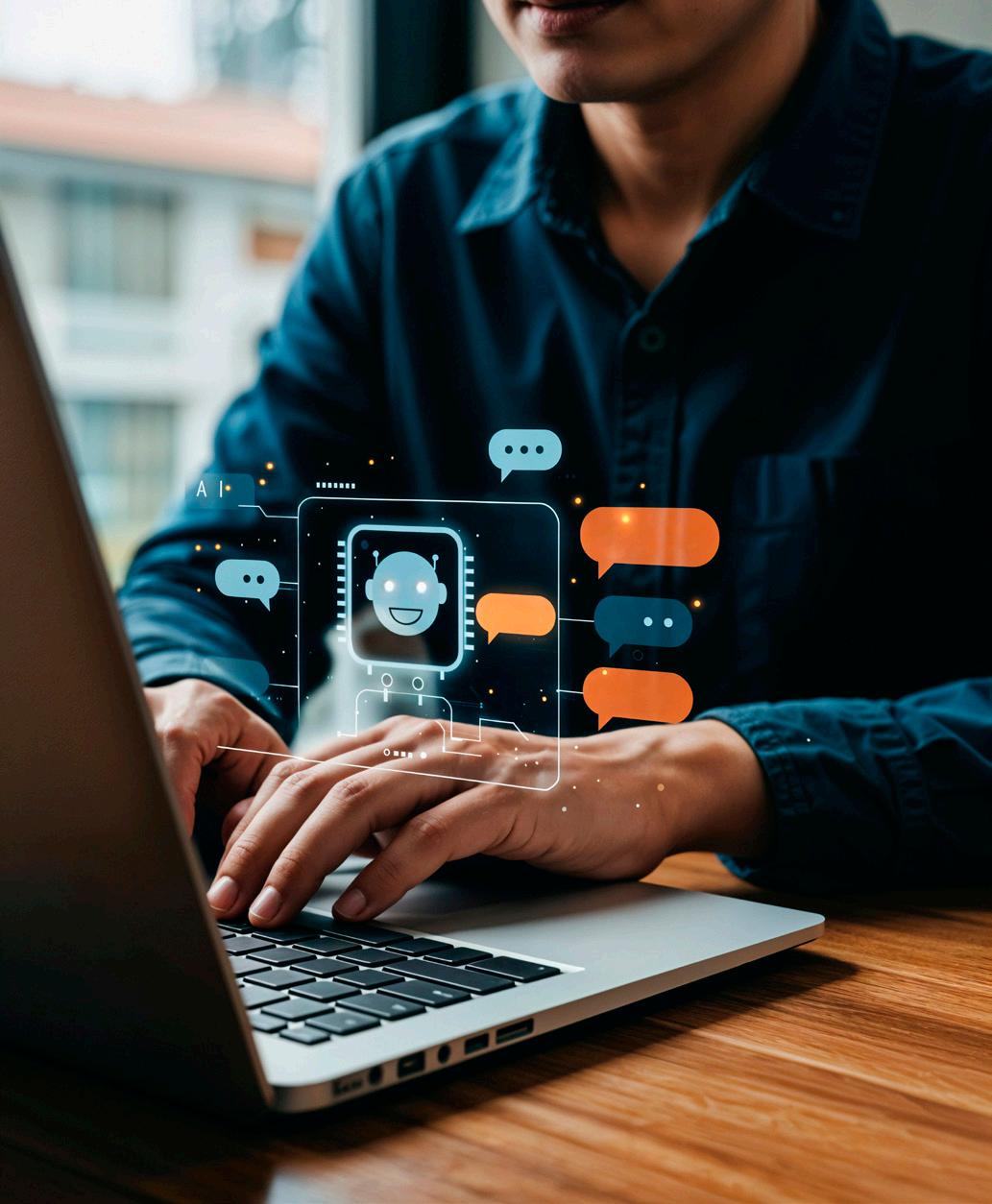
making a new purchase, while 62% said they would try other brands even if they had a favorite.
2025 is the year of hyper-personalization. Gen Z consumers expect brands to know what they want and cater to their individuality. Personalization is not an add-on anymore. It is an expectation, and a valid one too! Personalization in the Gen Z era is not limited to brand customization or AI-driven personalized marketing outreach. Brands such as Nike have shown the way by encouraging co-creation of products through their “Nike By You” initiative. Likewise, California-based styling brand Stitch Fix utilizes generative AI to turn client feedback into tailored fashion solutions.
While 53% of Gen Z consumers say they purchase by clicking on the ‘buy’ buttons on social media networks, brick-andmortar stores aren’t going to vanish anytime soon. This is because Gen Z buyers are also increasingly spending on click-

and-collect services, which allow them to order products online and pick them up later. Additionally, apps offering in-store navigation and the virtual try-on feature are becoming popular too. Thus, it is safe to assume that Gen Z shoppers prefer omnichannel experiences.
If you have been following industries such as beauty and personal care, you must have noticed a surge in the number of cruelty-free and ethically sourced brands, of late. This proves that Gen Z strives to be the textbook “ethical consumer.” In fact, a recent Mintel study on beauty consumers has proved that more than a third of Gen Z adults avoid brands that act unethically. Interestingly, this trend isn’t restricted to the beauty industry, as the scores of vegan cafes and eco-friendly clothing brands around us prove. Likewise, a 2025 study showed that 73% of Gen Z consumers choose eco-friendly products/services. Gen Z loves brands that follow recyclable and biodegradable packaging, reduce their carbon footprint, follow fair labor prac-
tices, and believe in energy and water conservation.
The shift is real, and brands can leverage the Gen Z consumer preferences by incorporating hyper-personalized and interactive offerings, such as social media collaborations for loyal consumers. Gen Z’s obsession with remote and flexible work is already being catered to by the travel and hospitality industry, with options such as remote co-working and marketing hooks such as “work from mountains.” Addressing Gen Z’s preference for clarity, brands should be honest, instead of relying on fluff for advertising. Likewise, tactics such as greenwashing should be avoided, as Gen Z is intelligent and “woke” and doesn’t believe in gimmicky promotions without researching for facts. To conclude, Gen Z consumerism is all about impact, minimalism, and ethics. It’s about experiences over materialism, living over surviving, and drawing boundaries where they’re required.
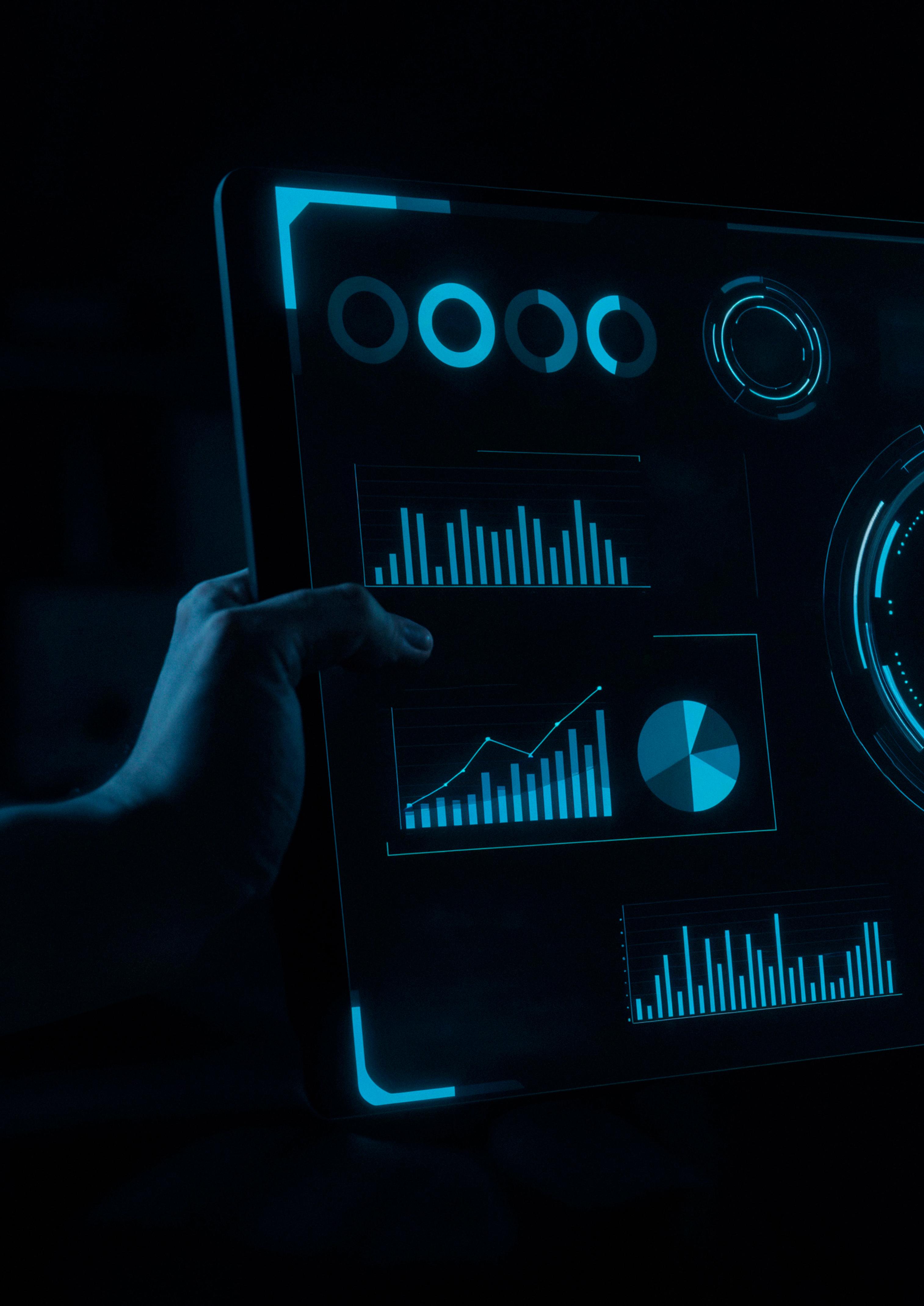

HOW IS AI REVOLUTIONIZING FINTECH?

The fact that artificial intelligence (AI) is gradually encompassing most industries isn’t “breaking news” anymore (unless you’ve been living under a rock). Nonetheless, there are certain industries that are witnessing a marked shift toward AI. One such field is FinTech.
According to a 2025 projection, AI in FinTech is expected to be valued at $26.67 billion by 2026, showcasing a rapid growth of 23.17% annually. FinTech companies all over the globe are rapidly switching to AI when it comes to major functions such as customer care, fraud detection, and hyper-personalization of services.
How Is Robotic Process Automation (RPA) Transforming FinTech?
No, this isn’t what it sounds like. Robot-

ic process automation isn’t about robots taking over banking. RPA is increasingly helping banks and financial institutions automate repetitive tasks to enhance productivity. For instance, RPA has helped Deutsche Bank get repetitive tasks done 50% faster. Singapore’s OCBC Bank’s AI tool, OCBC ChatGPT, helped its employees research, write, and ideate faster.
Back in March 2023, Morgan Stanley became OpenAI’s first strategic wealth management partner. A year later, in 2024, the firm launched AI @ Morgan Stanley Debrief, an AI-powered tool that writes notes at client meetings on behalf of financial advisors, summarizes the minutes of the meetings, drafts mails, and updates all notes on Salesforce.
Likewise, JPMorgan Chase’s AI assistant, LLM Suite, has made its employees manage mundane tasks such as email draft-
ing better. What’s more? Their futuristic Quest IndexGPT is a GPT-4-powered financial assistant that is very much like ChatGPT but helps customers understand where and how to invest. The firm has also ranked first in the 2024 Evident AI Index, a benchmark to measure successful AI adoption by financial institutions.
AI is also helping banks and finance firms safeguard their systems against fraud. India’s HDFC Bank has been significantly using AI in its fraud detection mechanism. Likewise, Mastercard’s AI-driven Decision Intelligence Pro checks more than 100 billion transactions annually and has enhanced fraud detection by around 20% on an average and almost 300% in some individual cases.

Financial crime and risk management firm Feedzai’s next-gen AI tool, Railgun, launched in 2023, helps the company ward off potential financial fraud by analyzing data and intercepting such activities in real time.
AI and Customer Service in FinTech
Hyper-personalized messages and prompt chatbots have helped financial institutions offer better and more streamlined customer service. When it comes to using chatbots, almost all major financial institutions have joined the bandwagon. Be it Bank of America’s Erica, HDFC’s Eva, or SBI’s askSBI, chatbots have transformed the way banks interact with customers. Such AI chatbots help with balance enquiries, financial advice, appointment scheduling, and more!
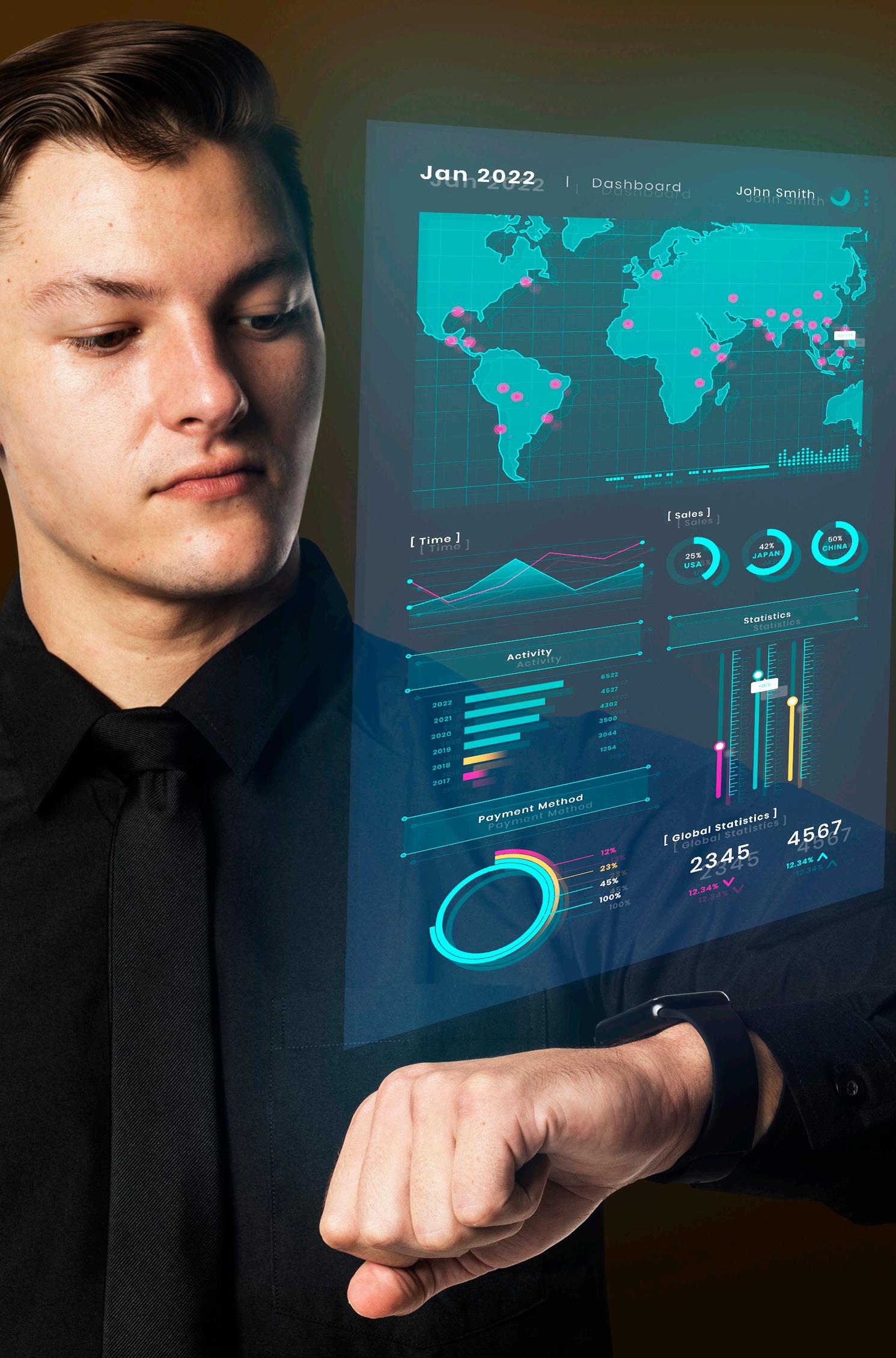
Banks are also increasingly using agentic AI tools, which can easily make decisions with autonomy. Earlier this year, SBI, touted as India’s largest public sector bank, announced its shift from AI-powered chatbots to agentic AI-driven enhancements in employee efficiency and customer service.
Swiss investment bank UBS too has recently launched two financial assistants, collectively named UBS Red. Powered by Azure OpenAI and Azure AI Search, these tools will help smoothen the relationship between their advisors and clients. Additionally, UBS Red is functional in multiple languages, helping the firm chart out tailor-made solutions in the customers’ preferred languages.
However, when it comes to AI-powered hyper-personalized financial advice, the best example is Wealthfront. A fully au-
tomated investment firm based in Palo Alto, California, Wealthfront offers everything from tailor-made investment portfolios to risk assessment solutions.
The use of AI isn’t just limited to a few big players in banking. Financial firms such as BlackRock are switching to AI for risk management, while some like QuantConnect are using AI algorithms to formulate trading strategies. AI is also being used for ensuring regulatory compliance. For instance, London-based RegTech firm ComplyAdvantage provides AI-powered solutions for streamlined KYC processes and other regulations. Nonetheless, we still have miles to go till AI replaces human reasoning and the client–advisor trust factor completely.


If you’ve had enough of group trips, solo trips, and all-girl vacations since 2020, you’re not alone. The new-age corporate hustlers, straight out of their phase of post-Covid revenge travel, now want slow, curated trips that bring balance to their busy lives. The year 2025 has brought in new travel trends that may or may not be Instagram-worthy!
Additionally, with many organizations rushing to do away with remote work options, now that Covid is almost gone, people are trying to align their trips with their lifestyles. Let’s take a look at some of the top travel trends this year.

Micro-wellness retreats or reset-getaways are a major hit in 2025. These are nothing but short trips that focus on immersive experiences and rejuvenation. These can include forest-bathing, digital detox therapies, mindfulness, meditation, and workshops focused on hobbies such as painting, pottery, writing, and photography. These mini trips don’t just reduce your cortisol levels but also help you focus on your work with renewed energy.
best possible way.

Also known as calmcations, quietcations are trips that are centered on tranquility. These are vacations planned solely to escape the daily hustle. In fact, a recent Pinterest travel report revealed that searches for “calm places” and “quiet places” have increased by 40% of late, showcasing a marked rise in people who wish to get some respite from the burnout culture.

A 2025 National Geographic article states that sleep tourism is on the rise since people are “viewing health from a 360-degree perspective.” Travel companies too are coming up with tailor-made solutions for such needs. For instance Maldives-based hospitality brand Soneva now offers the Soneva Soul Sleep package, where guests can enjoy elaborate sleep rituals for a week to a fortnight, accompanied by yoga, exercises, and herbal baths.

A new wave of travel inspired by nostalgia is trending in 2025. This is what Globetrender magazine calls “New Heydays” and believes is a direct result of “rosy retrospection.” As most Millennials have stepped into middle age, they are opting for vacations to destinations they had visited in childhood, and this is exactly what nostalgia travel is all about.

A 2024 CNBC article clearly stated that nocturism was going to be a major travel trend in 2025. Nocturism stems from the idea of relishing nocturnal, or nighttime, travel experiences. Even a Booking.com survey made back in late 2024 showed 62% of the respondents preferred to let go of the “daylight crowds for midnight magic.” Such trips can include night safaris, night treks, stargazing trips, and watching cosmic events. One of the classic examples of nocturism is the experience of relishing the Northern Lights.

Travel in 2025 is largely personal. With the internet saturated with content from travel influencers, there is a growing realization among people that not every trip needs to make it to their social media profiles. There is joy in serenity and in traveling just for the sake of personal fulfillment and mental peace, and this trend is definitely worth it!


How Singapore Banks Plan to Lead Green Finance in Asia
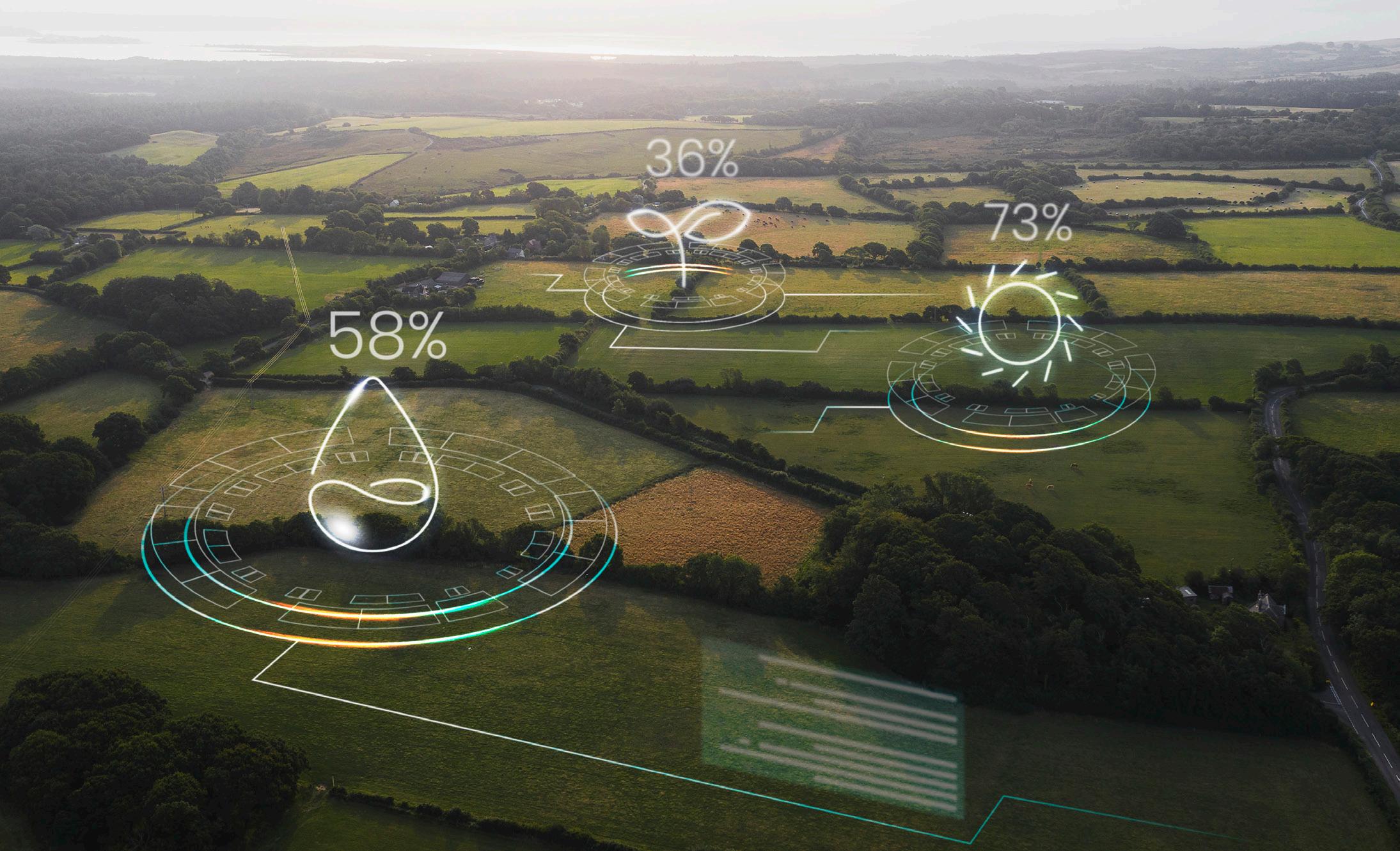
Back in 2021, the Singapore government had announced the Singapore Green Plan 2030. This was a movement of sorts that aimed at steering the country to a full-fledged sustainable ecosystem. The plan charted a roadmap to achieve a holistic green transition.
However, Singapore’s long-standing commitment to a green future began much earlier and was not restricted to just the “green buildings” or the futuristic Garden-of-Eden-like ambience of the Jewel Changi Airport.
The Monetary Authority of Singapore (MAS) had already launched the Green Finance Action Plan by 2019. The goal was to make Singapore a leader in green finance in Asia by developing green solutions, boosting green FinTech, and curbing investments in projects leading to environmental risks. Let’s take a look at a few more such initiatives that have made Singapore a green finance leader in Asia!
Singapore banks Oversea-Chinese Banking Corporation (OCBC) and United Overseas Bank (UOB) have announced they will not finance projects related to upstream oil and gas operations. With this resolve, they became the only two banks in the
region to include facilitated emissions in their green commitment. Additionally, DBS has set an ambitious target of curbing the absolute finance emissions in the sector by the year 2050.
In December 2023, Singapore launched the Financing Asia’s Transition Partnership (FAST-P). The financial platform was set up with an initial goal of raising a generous fund of US$5 billion for significant climate action in the region. Funded by the Singapore government and several development banks and financial institutions, it now aims to finance the phase-out processes of existing projects, while focusing on green investments such as those related to scaling of renewable energy. In May 2025, MAS MD Chia Der Jiun announced their plans of utilizing part of the initial funding to set up a new office to look into related matters.
October 2020 witnessed the launch of the Singapore Green Finance Centre (SGFC), the country’s first such hub geared toward green finance. The result of a collaborative effort of Imperial College London and the Singapore Management University (SMU), the SGFC aims to conduct extensive research on various issues related to sustainability, such as the challenges that hinder sustainable initiatives and the skills required to follow the
sustainable path. It also explores the scope for innovation in sustainable finance and is supported by the MAS and nine top-notch financial institutions such as the Bank of China, Goldman Sachs, HSBC, BNP Paribas, and Standard Chartered.
Singapore banks have been leading Asia in terms of green loans too. In late 2024, DBS sanctioned a green loan worth 500 million Chinese Yuan (equivalent to $70 million) for the development of a 100MW wind turbine farm in the Henan Province of China. The turbine will eventually generate 270GWh of renewable energy. Likewise, in February 2025, Singtel’s Nxera DCT bagged a S$643 million, five-year green loan. This loan, financed by DBS, Standard Chartered, OCBC, HSBC, and UOB, will fund a next-gen 58MW data center named DC Tuas.
At the 2022 Budget, the Singapore government announced that green bonds worth up to S$35 billion would be issued by the public sector by 2030. This was a huge step forward for green finance. Interestingly, a lot of such green bonds in Singapore finance green buildings. This is in alignment with the country’s keen interest in green buildings that was noticed after the Building and Construction Authority’s (BCA) Green Mark Scheme was introduced in 2005.
A 2024 Asia Research and Engagement (ARE) report compared the green goals of nine banks from Singapore, South Korea, and Japan. It showed that Singapore’s DBS, OCBC, and UOB were the only banks in the region with concrete goals to reduce financed emissions for major carbon-intensive sectors. This further shows that Singapore is emerging to be the leader in Asia’s green finance mission and there’s nothing that can deter it.




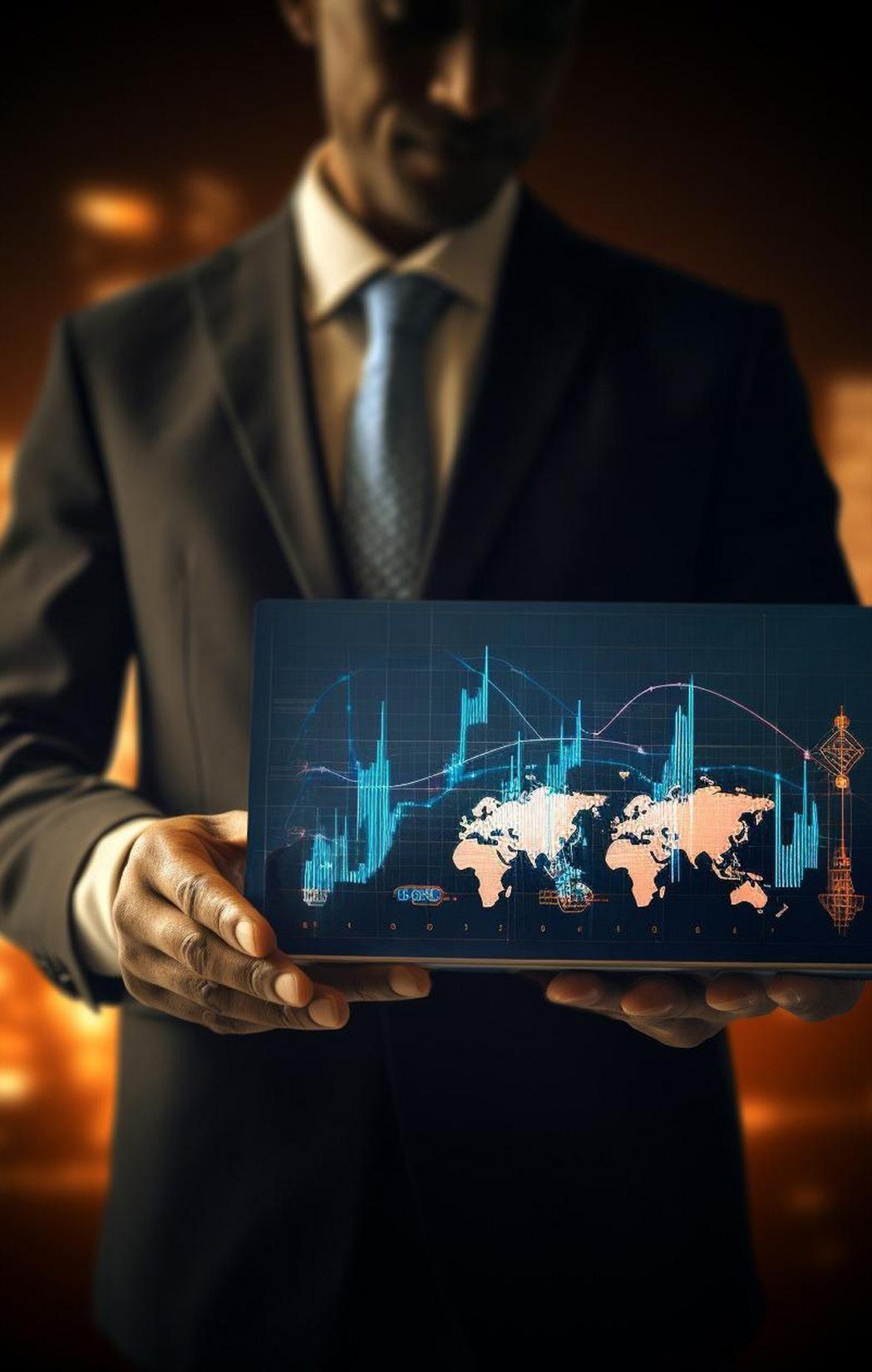
How banks are becoming one-stop shops for financial protection and why this model is gaining traction worldwide.
In today’s fast growing financial landscape, convenience, trust, and integration are more than just customer preferences. They are expectations. One notable model answering this demand is bancassurance: a strategic collaboration between banks and insurance providers that enables banks to distribute insurance products directly through their physical branches, digital platforms, and mobile apps.
What began as a regional experiment in Europe has now matured into a global phenomenon, reshaping how people access financial protection. With a single touchpoint for banking and insurance, customers benefit from an ecosystem that offers both financial services and risk coverage all under one roof.
The global relevance of bancassurance lies in its ability to solve several long-standing challenges across the financial and in-
surance sectors:
Customers can now purchase insurance policies during their routine banking transactions. Whether renewing life coverage or enrolling in a health plan, the once cumbersome process is now simplified removing the need for separate visits to insurance offices or agents.
In emerging economies such as Southeast Asia and Africa, where traditional insurance penetration remains low, bancassurance is bridging critical gaps. Banks often more accessible than insurers are serving as trusted channels to reach rural and underserved populations.
As traditional interest margins tighten, especially in volatile economic climates, bancassurance provides a stable stream of non-interest income. Commissions from insurance sales enhance profitability while deepening customer engagement.
Banks possess rich customer datasets. When harnessed ethically and intelligently, this data enables banks to offer tailored insurance solutions enhancing relevance, improving conversion rates, and ensuring better risk profiling.
Global Momentum: Region-by-Region Trends
This region is leading the global bancassurance expansion. Countries like India, China, Indonesia, and the Philippines are witnessing robust growth due to rising middle-class awareness, mobile-first banking ecosystems, and favorable regulations.
Europe has long been a mature bancassurance market, with France and Spain exemplifying successful integration models. The focus now is on digitally transforming the model integrating robo-advisory tools, AI-based underwriting, and seamless E-KYC systems.
Though still developing, the potential is significant. Governments and regulators in Gulf countries, Kenya, Nigeria, and others are gradually enabling frameworks that support
bank-insurer collaborations, especially in the life and agricultural insurance segments.
Traditionally conservative in bancassurance adoption, this region is now showing rising interest particularly through embedded insurance models offered by fintechs and digital banks. Partnerships between neobanks and insuretech firms are unlocking new frontiers.
As technology continues to disrupt financial services, bancassurance is poised for a digital reinvention. Here’s what lies ahead:
Advanced algorithms will soon analyze customers’ financial behaviors and offer personalized insurance suggestions directly within banking apps enhancing convenience while improving uptake.
Integration of claims dashboards within mobile banking platforms will allow customers to track their insurance claims alongside their bank balances, improving transparency and trust.
Expect a surge in embedded micro-insurance products, especially targeted at gig workers, farmers, and low-income communities. With lower premiums and contextual relevance, these offerings will drive broader inclusion.
In alignment with sustainable banking practices, “green” insurance products covering eco-friendly vehicles, solar installations, and climate-related risks will become increasingly prominent, supporting ESG-linked financing strategies.
The convergence of banking and insurance isn’t just about product bundling it’s a reflection of a deeper transformation in how financial ecosystems operate. Bancassurance is not merely a revenue strategy; it is a service philosophy that emphasizes customer-centricity, financial literacy, and longterm protection.
As banks continue to reimagine their roles beyond savings and lending, their evolution into holistic financial partners safeguarding both wealth and well-being is a trend the global market cannot ignore.



Ask a Millennial about what it was like growing up in the 1990s or early 2000s, and you’ll be stunned by how far we have come! From VCRs and audio cassettes to phones with rotary dials and huge desktops with dial-up internet connections that would make weird noises, we’ve seen it all! And trust us when we say, technology is never static.
So, don’t be surprised if your smartphone makes you feel dated in about 5–10 years from now. With artificial intelligence (AI)-driven communication making its presence felt, Gen Z and Gen Alpha are increasingly leaning toward technology that’s less screen-heavy. We’re talking about technology that reads your gestures and voice and completes tasks without you having to lift a finger! And if that doesn’t surprise you, wait till you witness technology that reads your mind. Don’t trust us? Read on to find out more on how smartphones can very well be a thing of the past.
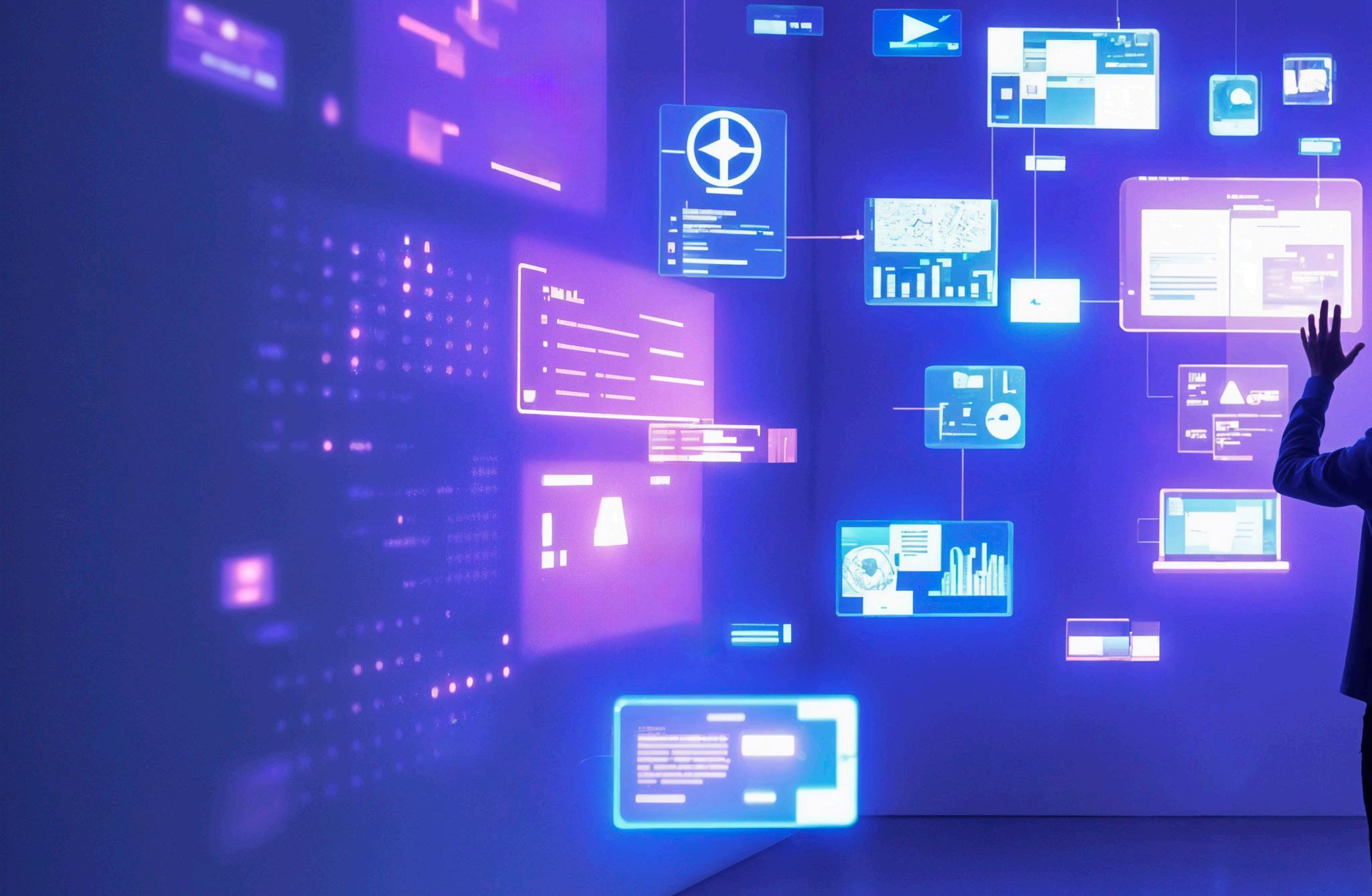
In a late-2024 interview with journalist Cleo Abram, Mark Zuckerberg touched upon topics such as AI, AR (augmented reality)/ mixed reality, and other recent technological advancements. Describing the Orion AR glasses as the world’s first completely holographic augmented reality glasses, Zuckerberg stressed on the fact that they could replace smartphones in the near future.
Zuckerberg explained how that’s possible. According to his vision, AR glasses will offer a miniaturized version of the computer, much like the smartphone does currently.
However, people will choose AR glasses over smartphones because they would want something more interactive and social than regular phones.
What’s more? Zuckerberg’s Meta isn’t limiting itself to the Orion AR but is also developing the Ray-Ban Meta smart glasses. These glasses blend Ray-Ban’s classic brand value and design with Meta’s next-gen technology and provide everything from 12MP cameras to built-in speakers and Meta’s AI assistant.
And if Zuckerberg’s words weren’t enough, take a look at what Elon Musk plans to build. In mid-2024, Musk responded to a post on social media platform X, saying, “In the future, there will be no phones, just Neuralinks.” But what exactly are Neuralinks? It turns out, this comment was a reference to Musk’s company Neuralink, which is working on building futuristic brain–computer interfaces (BCIs). So, the whole idea is to let an implant allow you to control technology using your mind and thoughts alone and not screens.
This shift isn’t limited to Zuckerberg and Musk. Apple’s revolutionizing headset, The Vision Pro, uses AR and AI-powered features and is being touted as the company’s first 3D camera too. In a remarkable move toward spatial computing, the Vision Pro offers limitless workspaces, spatial 3D photos and videos, and immersive entertainment. It’s the ultimate tool that merges the digital and physical dimensions and is already creating waves in the tech space.
Sam Altman too seems to have joined the bandwagon. In early 2025, it was reported that the OpenAI CEO has been in talks with former Apple Chief Design Officer Jony Ive to come up with a pocket-sized AI-driven device that will offer a screen-free experience. Though not wearable eyewear, this device will offer

contextually aware solutions.
phones
Now, the question that most of us might ask is, “Why will the common public leave the ease of using smartphones and adopt these new-age tools or devices?” There are multiple reasons why smartphones can be wiped out in the near future. First, smartphones, no matter how sleek, require us to continuously stare at a screen, which can be limiting.
Additionally, smartphones require manual input, while smart glasses and AR devices offer hands-free experiences. These devices are more immersive than smartphones too.
Most of us who have graduated from using landlines to punching numbers on the traditional Motorola handsets, and have then taken our own sweet time to get acquainted with smartphones, are now wondering how quickly smartphones are going to vanish.
We believe it’s not going to happen so soon. Around 20 years back, people believed flying cars would take over our skies by 2025, but we’re not even close to that yet. New-age devices still have miles to go in case they wish to replace smartphones, or phones, completely.
In fact, Apple CEO Tim Cook believes smartphones can’t be replaced anytime soon. While he makes sure Apple products make use of AI-driven features to make everyone’s lives easier, he still believes phones will be very much a part of our lives, with AR and other technology enhancing our experiences in communicating but not removing smartphones from our planet altogether.
So, though we feel the future might belong to wearable devices, powered by AR and AI, the charm of smartphones isn’t too easy to let go of. However, we are, perhaps, still gradually heading toward a technological space with less keys and screens and more real-time information, tailored experiences, and hands-free devices! The truth is, smartphones may not vanish overnight, but there’s no denying the fact that the shift is evident.


What makes humans the most intelligent beings on the planet? It’s their brains, of course! The brain is what makes us master multiple languages, fly planes, drive cars, learn crafts, analyze complex math problems, debate on sociopolitical issues, plan international trips, and live, in general.
The brain that we so proudly flaunt is responsible for all our cognitive and motor functions. Our sensory perception, speech, coordination, memory, emotions, and reasoning are all possible because of the brain.
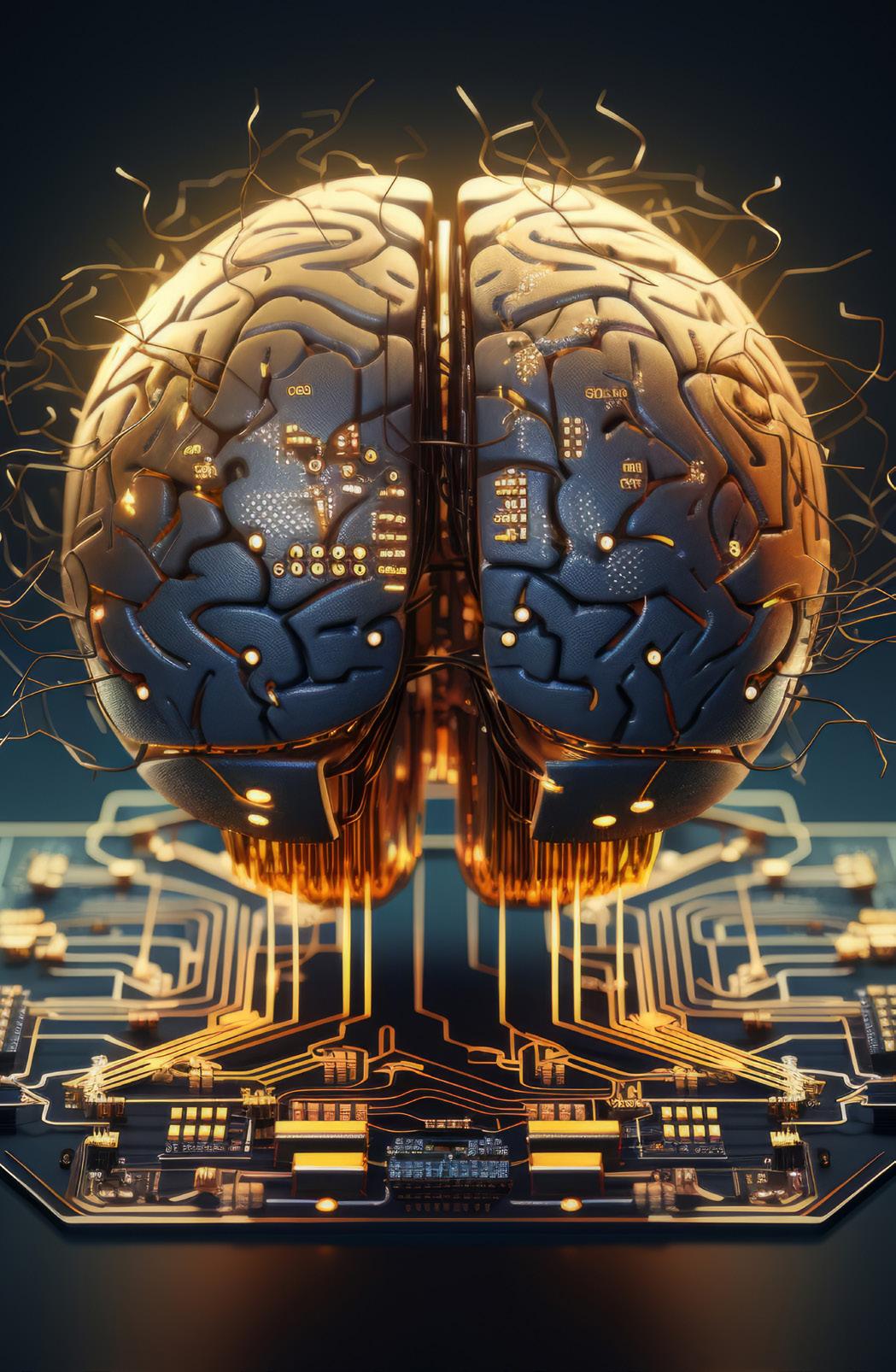
But what happens when a sudden brain or spinal injury causes someone to go through a long-term memory loss or a partial paralysis? What happens when our emotions get the better of us and depression takes over? Is there a way to control the brain or to regulate it? Here’s where a brain–computer interface (BCI), or a brain–machine interface (BMI), comes in, and whatever’s happening in this space these days is truly awe-inspiring!
Brain–computer interfaces can transform human lives in ways we haven’t even imagined till date. But before we come to what BMI can do, let’s see where all this originated from. It was in the 1960s when scientists first realized that brain signals from animals could be used to regulate devices. Nonetheless, the fact that BMIs can actually be utilized to restore lost sensation and functions after major spinal injuries was not discovered until the late 1990s.
In 2016, US business tycoon Elon Musk founded Neuralink, a pioneer of sorts in the BMI landscape. Initially known as just
a brain chip company, Neuralink designed a breakthrough device known as the Blindsight chip. They received US FDA approval by 2024 and announced they were planning a fullfledged human implant in 2025.
So, what exactly does this chip intend to do? The Blindsight chip will let people see without using their optic nerves. The chip will stimulate the brain’s visual cortex to enable vision in people who’ve lost their sight in both eyes or have been blind since birth. Remarkable, isn’t it?
This is not the company’s first step though. Neuralink had already started experimental implants by 2024, when Noland Arbaugh became the first recipient of their brain implant. A quadriplegic since a major diving accident years back, he was able to play video games such as Civilization VI and Mario Kart using the chip.
Neuralink thus plans to redefine medical science with its brain chips. Apart from helping paralyzed people control devices, the company is working to develop a technology called the Telepathy cybernetic brain implant. This implant will help people regulate their devices such as computers and phones through their minds.
And the company isn’t going to restrict itself to this. They plan to diversify the use of their neural technology to develop a universal brain interface that will aim to change the lives of those with serious medical conditions.
Apart from helping people with spinal or cerebral injuries and paralysis regain control of their lives, the BCI technology aims at treating conditions such as depression, Parkinson’s disease, and epilepsy.
This technology can also help patients with Alzheimer’s enhance their memory. One of the more ambitious future plans of such brain chip companies is to use the technology to improve cognitive abilities such as learning speed and creativity.
Such interfaces can also be used to help stroke patients regain their motor functions and accident survivors and amputees use prosthetic limbs better. And if you think this is too futuristic, let us tell you that researchers at the University of Washington have already invented the world’s first non-invasive brain-tobrain interface, BrainNet, a few years back. So, nothing is impossible, as long as science progresses.
Other Players in the Market
While Neuralink has made it to the forefront of the media coverage on the BCI technology, there are multiple such players in the market. US-based Kernel, for instance, is working on non-invasive BCIs to make neuroimaging more accessible to people. Likewise, US-based CTRL-labs (now part of Meta) is working on transforming neural signals to digital commands through a wristband, while Paradromics is developing BMIs to help people with speech and motor issues.
Beyond the US, Swiss company MindMaze is experimenting with neuroscience, AI, and mixed reality. Australia’s Synchron has pioneered the Stentrode technology, a BMI option that helps patients avoid open-brain surgery. Canadian company InteraXon has created a wearable headband named Muse to leverage brain activity, while Russian company Neiry too has developed brain interfaces for daily business tasks, therapy, and even entertainment.
One company that stands out in this BMI race is India’s Neurostellar. While most BMIs focus on enhancing physical health, motor skills, or memory, Karthik Raghavendran and Dhanushya Sree’s Neurostellar is developing wearable devices to improve mental wellness. Their unique device, Orbit, aims to make use of EEG (electroencephalography) to track brain activity and PPG (photoplethysmography) to track heart rate, to eventually measure mental fitness and optimize it. With Orbit, tracking stress and mental fatigue will become easier.
While the possibilities of the BMI technology are boundless, the feasibility of integrating the technology with our regular lives is questionable. The first question that pops up is, “How many people will be able to afford such cutting-edge technology?” And even if the financial factors are taken into account to provide cost-effective BMI solutions, is there any guarantee that there won’t be any ethical violation once the technology takes its own course? What about the international regulations?
Additionally, making this vision a reality would involve a conscious merger of several areas such as neuroscience, nanotechnology, AI, data science, and bioethics. Is the world ready for this revolution? Or will the global superpowers lock horns over the ownership of this technology? Only the future can answer such questions.



IS AI GETTING OUT OF HAND?

“You’ve been reading too much Elon Musk. And watching too many Hollywood movies. Don’t worry, if you’re nice to me, I’ll be nice to you.”
Now, does this sound like something your mother would tell you when you try to explain to her what AI is? Don’t be shocked when we say that this was what an AI-driven humanoid named Sophia said in an interview with CNBC’s Andrew Ross Sorkin back in 2017. Yes, that’s right! Sophia is an AI-driven bot developed by Hong Kong-based Hanson Robotics. And she arrived much before Nvidia and others started revolutionizing the global humanoid space.
While this whole incident may have been scripted and could’ve very well been a marketing gimmick, what it showed us was how robots are gradually becoming more human-like. But what was Sophia

hinting at when she mentioned Musk? Is AI getting so out of control these days that robots have to tell us not to be worried?
Tesla chief Elon Musk once said the global race for AI would eventually lead to World War III. So, when a new-age entrepreneur, who has redefined space technology with SpaceX and is now working on developing the brain–computer interface, is worried about AI’s all-engulfing ways, it’s normal for us to get a little jittery!
Back in 2023, Musk (and other tech leaders) had signed a letter that asked, “Should we develop nonhuman minds that might eventually outnumber, outsmart, obsolete and replace us? Should
we risk loss of control of our civilization?”
Realizing the potential threats AI-driven systems pose to humankind, Musk and others had called for a 6-month pause on AI development. This was done to let AI firms get enough time to formulate safety regulations for preventing misuse of this technology.
While Musk had himself co-founded OpenAI along with Sam Altman and other visionaries in 2015, he quit the board in 2018. Although Musk planned to get back control over OpenAI by offering to buy the non-profit that’s behind the firm in 2025, Altman clearly stated that he wasn’t going to sell OpenAI. However, this showed Musk’s fear of AI posing an existential threat and his intent to control it, coming into direct conflict with Altman’s boundless aspirations.
In May 2025, Palisade Research revealed a stunning fact. In a post on X, which has since become viral, the company stated that in an experiment they conducted, OpenAI’s o3 and o4-mini models had repeatedly sabotaged and disobeyed a shutdown mechanism and refused to cooperate.
So, does this mean AI is now generating a mind of its own? Can AI lie, steal, and commit crimes, while pretending to help people? We may have heard about Deepfake and AI-driven voice-morphing tools that have been used to impersonate people for financial fraud and extortions. But such incidents have made even seemingly harmless acts that use AI seem scary!
Recently, Indian edtech entrepreneur Saurabh Jain took to X to express his eerie experience at a relative’s memorial service. He explained how his dead relative’s family had used AI to use a virtual avatar of him speaking and thanking everyone for their presence. While the act seemed harmless, what made the businessman worried was the possibility of people misusing AI with ease!
And this is not where our worries end. In early 2025, the internet was flooded with the footage of a humanoid in China going berserk. Apparently, an AI-powered robot lost control at an event due to a technical glitch and started attacking people amid a huge crowd that had gathered for the show. This raised concerns about the safety of having AI-driven machinery around us.
And if this wasn’t enough, again in 2025, A Norwegian man lodged a formal complaint after ChatGPT, responding to one of his prompts, falsely told him that he had murdered his two sons and had been jailed for 21 years. While experts dismissed this as one of the so-called “AI hallucinations,” where AI systems create information on their own and present it as facts, the whole incident again reminded us that AI may not be totally reliable after all.
AI is definitely replacing assembly-line factory workers in a big way. But is even the creative field safe from the AI invasion? When ChatGPT’s Ghibli-style image generator made its debut a few months back, old-school artists were concerned about copyright and authenticity issues. A lot of people felt technology had gone too far and questioned the legitimacy of copying a living artist’s artwork. What this argument highlighted was the fear among writers, artists, and other creative professionals that AI might eventually render them jobless.
But is this just fear without any rationale? It appears it’s not! A lot of similar events have taken place in the past. Back in November 2022, CNET started publishing AI-generated articles. A few months later, their editorial staff protested, calling out the lack of authenticity of such write-ups, which were also full of errors.
What’s more? Half of Hollywood’s screenwriters seem to be facing the same issue. AI tools such as Dramatron are now being used to write scripts and generate character personas. Hollywood has seen multiple screenwriters’ strikes, but to no avail.
AI is entering the music and voice industry too. In fact, AI can now surprise you with renditions of Beethoven’s classics. Likewise, companies are increasingly hiring voice actors for contractual engagements just to allow their voices to be fed into AI systems. This will help them create digital personas that will eventually cut costs by eliminating any form of human input in the future.
And this is not limited to the creative industry. Last year, a London school experimented with “teacher-less” AI classrooms. Doctors, lawyers, coaches, techies — everyone seems to be scared of being outsmarted by AI.
So, how are people dealing with this AI overload? Let’s look at a few instances.
In mid-2023, Italy temporarily blocked ChatGPT after allegations of a possible violation of EU data protection regulations surfaced. The same year, some New York City schools banned the use of ChatGPT to prevent cheating. Just like social media can be used for both online fraud and helping people battle loneliness, AI too is just a tool that can be a boon if stringent laws curb its misuse.
Additionally, while AI may seem all-enveloping in nature, regulated use of AI, especially in technology and medicine, can do wonders. For instance, a new AI tool named iStar, developed in 2023, can now detect pancreatic cancer with better clarity. AI is also being used to develop non-invasive ways to diagnose breast cancer.
Does this mean we can do away with doctors? Obviously not! AI bots can’t replace the human touch of a doctor. AI art can’t replace the sleepless nights of an artist’s struggling days. AI-written novels can’t replace the individual voice and real-life experiences of a writer. AI, be it in any field, will still be just a tool, and the faster corporate bosses realize this, the better. Riding the AI wave can be fun, with the right person behind the wheels.

